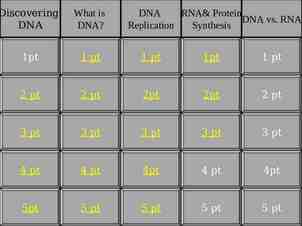PHP Scripting language Ludovico Antonio Muratori Ci S.B.i.C. snc
25 Slides79.50 KB
PHP Scripting language Ludovico Antonio Muratori Ci S.B.i.C. snc Cesena, ITALY
Introduction to PHP “PHP is a server-side scripting language designed specifically for the Web. Within an HTML page, you can embed PHP code that will be executed each time the page is visited. Your PHP code is interpreted at the Web server and generates HTML or other output that the visitor will see” (“PHP and MySQL Web Development”, Luke Welling and Laura Thomson, SAMS)
PHP History 1994: Created by Rasmis Lesdorf, software engineer (part of Apache Team) 1995: Called Personal Home Page Tool, then released as version 2 with name PHP/FI (Form Interpreter, to analyze SQL queries) Half 1997: used by 50,000 web sites October 1998: used by 100,000 websites End 1999: used by 1,000,000 websites
Alternatives to PHP Practical extraction and Report Language (Perl) Active Server Pages (ASP) Java server pages (JSP) Ruby
(Good) Topics about PHP Open-source Easy to use ( C-like and Perl-like syntax) Stable and fast Multiplatform Many databases support Many common built-in libraries Pre-installed in Linux distributions
How PHP generates HTML/JS Web pages Client Browser 1 4 Apache PHP module 3 2 1: Client from browser send HTTP request (with POST/GET variables) 2: Apache recognizes that a PHP script is requested and sends the request to PHP module 3: PHP interpreter executes PHP script, collects script output and sends it back 4: Apache replies to client using the PHP script output as HTML output
Hello World! (web oriented) html head title My personal Hello World! PHP script /title /head body ? PHP tag, allow to insert PHP echo “Hello World!”; code. Interpretation by PHP ? module will substitute the code with code output /html
Variables (I) To use or assign variable must be present before the name of the variable The assign operator is ' ' There is no need to declare the type of the variable the current stored value produces an implicit type-casting of the variable. A variable can be used before to be assigned A 1; B “2”; C ( A B); // Integer sum D A . B; // String concatenation echo C; // prints 3 echo D;// prints 12
Variables (II) Function isset tests if a variable is assigned or not A 1; if (isset( A)) print “A isset” if (!isset( B)) print “B is NOT set”; Using help “hiddenVar”; help “hidden Value”; echo help; // prints hidden Value help 10; help help * help; echo help; // print 100
Strings (I) A string is a sequence of chars stringTest “this is a sequence of chars”; echo stringTest[0]; output: t echo stringTest; output: this is a sequence of chars A single quoted strings is displayed “as-is” age 37; stringTest 'I am age years old'; // output: I am age years old stringTest “I am age years old”; // output: I am 37 years old Concatenation conc ”is “.”a “.”composed “.”string”; echo conc; // output: is a composed string newConc 'Also conc '. conc; echo newConc; // output: Also conc is a composed string
Strings (II) Explode function sequence “A,B,C,D,E,F,G”; elements explode (“,”, sequence); // Now elements is an array with all substrings between “,” char echo elemets[0]; // output: A; echo elemets[1]; // output: B; echo elemets[2]; // output: C; echo elemets[3]; // output: D; echo elemets[4]; // output: E; echo elemets[5]; // output: F; echo elemets[6]; // output: G;
Arrays (I) Groups a set of variables, every element stored into an array as an associated key (index to retrieve the element) books array( 0 ”php manual”,1 ”perl manual”,2 ”C manual”); books array( 0 ”php manual”,”perl manual”,”C manual”); books array (“php manual”,”perl manual”,”C manual”); echo books[2]; output: C manual Arrays with PHP are associative books array( “php manual” 1,”perl manual” 1,”C manual” 1); // HASH echo books[“perl manual”]; output: 1 books[“lisp manual”] 1; // Add a new element
Arrays (II) Working on an arrays books array( ”php manual”,”perl manual”,”C manual”); Common loop for ( i 0; i count( books); i ) print ( i 1).”-st book of my library: books[ i]”; each books array( “php manual” 1,”perl manual” 2,”C manual” 3); while ( item each( books )) // Retrieve items one by one print item[“value”].”-st book of my library: ”. item[“key”]; // each retrieve an array of two elements with key and value of current element each and list while ( list( value, key) each( books )) print “ value-st book of my library: key”; // list collect the two element retrieved by each and store them in two different // variables
Arrays (III) Multidimensional arrays books array( array(“title” “php manual”,”editor” ”X”,”author” ”A”), array(“title” “perl manual”,”editor” ”Y”,”author” ”B”), array(“title “C manual”,”editor” ”Z”,author ”C”)); Common loop for ( i 0; i count( books); i ) print “ i-st book, title: ”. books[ i][“title”].” author: “. books[ i][“author”]. “ editor: “. books[ i][“editor”]; // Add .”\n” for text new page or “. BR ” for HTML new page; Use list and each for ( i 0; i count( books); i ) { print “ i-st book is: “; while ( list( key, value) each( books[ i] )) print “ key: value ”; print “ BR ”; // or “\n” }
Case study (small database I) You need to build one or more web pages to manage your library, but: – “You have no time or no knoledge on how to plan and design database” – or “You have no time or knolwdge on how to install a free database” – And “The database to implement is small” (about few thousands entries, but depends on server configuration)
Case study (small database II) #cat /usr/local/myDatabaseDirectory/library.txt php manual X A 330 perl manual Y B 540 C manual Z C 480 (fields separated by tabs: 'php manual tab X tab A', new line at the end of each entry) ? // script to show all book in my library books file(“/usr/local/myDatabaseDirectory/library.txt”); // retrieve library “database” for ( i 0; i count( books), i ) books array[ i] explode( “\t”, books[ i]); // Extract elements from line . for ( i 0; i count( books array), i ) print “ i-st book, title: ”. books array[ i][“title”].” author: “. books array[ i][“author”]. “ editor: “. books array[ i][“editor”].” BR ”;
Case study A way to reuse code (I) Using functions is possible to write more general code, to allow us to reuse it to add feature: – For the same project (always try to write reusable code, also you will work for a short time on a project) – For new projects ? // config.php, is a good idea to use configuration files tableFiles array ( “books” ”/usr/local/myDatabaseDirectory/books.txt”); bookTableFields array (“title”,”author”,”editor”,”pages”); // future development of the library project (add new tables) tableFiles array ( “users” ”/usr/local/myDatabaseDirectory/users.txt”); userTableFields array (“code”,“firstName”,”lastName”,”age”,”institute”); ?
Case study A way to reuse code (II) ? // script to show all book in my library books file(“/usr/local/myDatabaseDirectory/library.txt”); // retrieve library “database” for ( i 0; i count( books), i ) books array[ i] explode( “\t”, books[ i]); // Extract elements from line . for ( i 0; i count( books array), i ) print “ i-st book, title: ”. books array[ i][“title”].” author: “. books array[ i] [“author”]. “ editor: “. books array[ i][“editor”].” BR ”;
Functions in details (I) The syntax to implement a user-defined function is : function function name([parameters-list]opt) { implementation code } parameters-list is a sequence of variables separated by “,” it’s not allowed to overload the name of an existing function; Function names aren’t case-sensitive; To each parameter can be assigned a default value; arguments can be passed by value or by reference It’s possible using a variable number of parameters
Object Oriented PHP Encapsulation Polymorphism Inheritance Multiple Inheritance: actually unsupported
Encapsulation ? val4 (( month 1)*3)/5; class dayOfWeek { val5 year/4; var day, month, year; val6 year/100; function dayOfWeek( day, month, year) { val7 year/400; this- day day; val8 day ( month*2) val4 val3 val5- val6 val7 2; this- month month; val9 val8/7; this- year year; val0 val8-( val9*7); } return val0; function calculate(){ if ( this- month 1){ monthTmp 13; yearTmp this- year - 1; } if ( this- month 2){ } } } // Main instance new dayOfWeek( GET[“day”], GET[“week”], GET[“ month”]); monthTmp 14; print “You born on “. instance- calculate().”\n”; yearTmp this- year - 1; ?
Inheritance Allow the creation of a hierarchy of classes Class reuseMe { function reuseMe(){.} Class extends reuseMe { function example(){ . // local initializations // call super constructor reuseMe::reuseMe(); } function doTask1(){.} function doTask2(){.} function doTask4(){.} function doTask3(){.} function doTask5(){.} } function doTask6(){.} }
Polymorphism A member function can override superclass implementation. Allow each subclass to reimplement a common interfaces. class reuseMe { function reuseMe() {.} Class extends reuseMe { function example(){ . // local initializations // call super constructor reuseMe::reuseMe(); } function doTask1() {.} function doTask2() {.} function doTask4(){.} function doTask3() {.} function doTask5(){.} } function doTask6(){.} function doTask3(){.} }
Multiple Inheritance not actually supported by PHP class reuseMe1 { function reuseMe1(){.} function doTask1(){.} function doTask2(){.} function doTask3(){.} } class reuseMe2 { function reuseMe2(){.} function doTask3(){.} function doTask4(){.} function doTask5(){.} } class extends reuseMe1,reuseMe2 {.}
Bibliography [1] “PHP and MySQL Web Development”, Luke Welling and Laura Thomson, SA






























